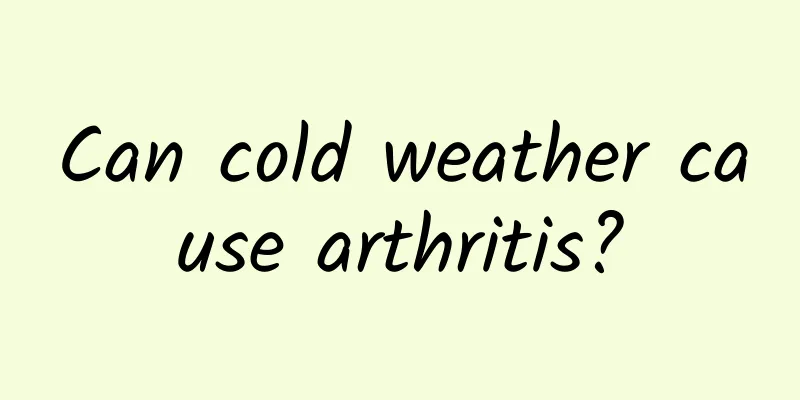The knees age before the person does?

|
In daily life, have you ever had a "cracking" sound in your knee joint when you stand up after sitting for a long time or go up and down stairs? Some people say that there is no other discomfort except the sound, while others feel that the sound is accompanied by pain and other discomforts. What is going on? Do you need to go to the hospital for further examination? The "clicking" of joints is medically called joint snapping, which often occurs during joint movement. It can occur not only in the knee joint, but also in other joints of the body, such as the common snapping when bending a finger or turning the neck. Joint snapping can be divided into two categories: physiological and pathological. Physiological snap When a joint is in a static state for a long time, if it is suddenly stretched or flexed, a crisp popping sound will occur. This sound is often physiological joint popping, which is common in the mature stage of joint development and more common in middle-aged and young people. Most knee popping belongs to this physiological popping, which is not accompanied by pain and will not harm physical health. Sometimes there is even a sense of relief after the popping. This situation does not require any treatment and can mostly be relieved or disappear on its own. Pathological snapping Pathological snapping is caused by joint injury, disease or structural variation, which leads to rough synovial membrane, loose joint capsule and ligament, tendon hyperplasia or tendon sheath stenosis, disc rupture, loose bodies in the joint, etc., and snapping occurs due to the friction of the above tissues during exercise. Our knee joint is mainly composed of 4 ligaments, 3 bones, 2 menisci, and some soft tissue ligaments attached to the knee joint, such as iliotibial band, quadriceps tendon, etc. There are three main tissues that may cause knee snapping, namely iliotibial band, meniscus and patellar cartilage, which correspond to iliotibial band syndrome, meniscus snapping and patellar snapping respectively. Among them, snapping caused by meniscus injury is the most common. The snapping sound can be crisp, dull or frosted, and most of them are accompanied by pain, swelling, joint stiffness and other discomforts. How to reduce the occurrence of snapping in daily life? 01 Increase knee joint stability: ① Isometric exercise in the knee flexion position. This movement is suitable for most people. Method: lean against the wall, keep the hip flexion at 90° and the knee flexion at 90°, hold for 1 minute as 1 set, and do 2 sets a day. ② Isometric exercise in the straight position is mainly suitable for older people with knee injuries. Method: Sit or lie on your back, straighten your knees and lift them off the bed or the ground, hold for 30 seconds as one set, and do 5 sets a day. 02 Relax the patellar tendon: Use your index and middle fingers to overlap and press the patellar tendon, sliding left and right and pressing for 3-5 minutes. 03 Relax the front thigh muscles: Use a massage ball or foam roller to roll on the front of your thighs for 3-5 minutes. 04 Strengthen the posterior thigh muscles: Lie flat on the ground, bend your legs, place your arms naturally on both sides of your body, then lift one leg and straighten it. Support yourself with your palms, tighten your core muscles, and use your gluteal muscles to lift your body up. When your chest, hips, and legs are in a straight line, pause for 1-2 seconds, then slowly land on the ground. Repeat the above movements with your legs alternately for a complete exercise. 10 times is a set, and do 5 sets a day. Summarize In daily life, we should pay attention to warm-up exercises before training, pay attention to the protection and exercise of the knee joint, avoid violent rehabilitation, and avoid external impact damage to the knee joint. Because the symptoms of snapping caused by different diseases are different, a comprehensive and accurate diagnosis can only be made based on clinical history, physical signs, imaging, and arthroscopy. Therefore, if swelling or increased pain occurs during the above movements, and the snapping is difficult to relieve, you must see a doctor as soon as possible to identify the cause and treat it in time. The popular science content of this platform has been funded by the China Association for Science and Technology's Science Popularization Department's 2022 National Science Literacy Action Project "National Society Science Popularization Capacity Improvement Project-Rehabilitation Science Popularization Service Capacity Improvement Action Plan" |
<<: Drinking tea for health? Drinking tea this way may be detrimental to your health!
>>: [Popular Science Class] Do you really understand the prevention of urinary stones?
Recommend
What to do if your labia is red, swollen and painful
A girl's vagina is tightly protected by the l...
Pictures of symptoms of mold in pregnant women
Fungal infections in pregnant women are actually ...
Treatment for small and dark menstrual discharge two days before menstruation
The incidence of menstrual problems cannot be und...
What to do about cervical infertility
The uterus is a female-specific organ and the cra...
How to treat recurrent itching in the genitals?
There are many reasons for genital itching, such ...
How long is the follow-up time after abortion surgery?
When women undergo abortion surgery, they must fi...
What is the cause of black menstrual clots?
If women feel uncomfortable during menstruation a...
What to do if cervical adhesion occurs after abortion
It can be a very troublesome thing for some young...
How to take care of yourself after hysterectomy
The uterus is a unique reproductive organ in the ...
Can I drink milk tea during my period?
I believe milk tea is the favorite of most women,...
About skin care during menstruation
During menstruation, it is always the most troubl...
Reasons for late pregnancy
Regarding the issue of showing belly, it really d...
What are the best ways to eliminate crow's feet?
Just yesterday, when I was looking in the mirror,...
What is the cause of hydronephrosis in pregnant women? Three reasons to tell you
It is very common to have hydronephrosis during p...
How does swimming prevent gynecological diseases?
Nowadays, many people have the habit of swimming,...









